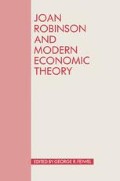Abstract
Many problems in capital theory — particularly ‘Austrian’ capital theory —take the following form: an asset has an intrinsic value X(t) at time t. If he takes a particular action at time T, then the asset’s owner gets X(T) at T. In anticipation of future usage we shall call the action taken at T stopping and refer to T as a stopping time. This set-up raises two natural, and related, questions. When should the intrinsic process be stopped? What is the present value of the asset? The standard examples are when to drink the wine whose quality at t is given by X(t) or when to cut down the tree which contains lumber with a value of X(t). If the discount rate is r then these questions may be simply answered. The optimal stopping time T* maximizes e-rT X(T) and the present value of the tree is its discounted value
To distinguish from intrinsic value, call this latter quantity the market value of the asset.
This is a revision of NBER technical paper 23 (May 1982). The research reported here is part of the NBER’s research program in Financial Markets and Monetary Economics. We are grateful to the National Science Foundation and the University of Wisconsin Graduate School for Research support. Rothschild and Stiglitz held the Oskar Morgenstern Distinguished Fellowship, Mathematica and Brock was Sherman Fairchild Distinguished Scholar, California Institute of Technology while some of the work on this paper was done.
Access this chapter
Tax calculation will be finalised at checkout
Purchases are for personal use only
Preview
Unable to display preview. Download preview PDF.
References
Arnold, L. (1974) Stochastic Differential Equations: Theory and Applications (New York: Wiley).
Brock, W. A., R. Miller and J. Scheinkman (1982) ‘Natural Monopoly and Regulation’, Department of Economics, University of Wisconsin, Madison and Chicago.
Brock, W. A. and M. Rothschild (1986) ‘Comparative Statics for Multidimensional Optimal Stopping Problems’, pp.124–138 in Models of Economic Dynamics (ed.) Hugo F. Sonnenshchein, Springer-Verlag Lecture Notes in Economics and Mathematical Systems, vol. 214.
Brock, W. A., M. Rothschild and J. E. Stiglitz (1982) ‘Stochastic Capital Theory’, NBER Technical Report No. 23.
Chow, Y. S., H. Robbins and D. Siegmund (1971) Great Expectations: The Theory of Optimal Stopping (Boston: Houghton Mifflin).
Cox, D. R. and H. D. Miller (1968) The Theory of Stochastic Processes (New York: John Wiley).
Dothan, U. (1981) ‘Debt, Investment Opportunities, and Agency’. Kellogg School of Management, Northwestern University.
Hartman, P. (1973) Ordinary Differential Equations, 2nd edn (Baltimore: privately published).
Karlin, S. and H. M. Taylor (1981) A Second Course in Stochastic Processes (New York: Academic Press).
Krylov, N. V. (1980) Controlled Diffusion Processes (New York: Springer-Verlag).
McDonald, R. L. and D. Siegel (1986) ‘The Value of Waiting to Invest’, Quarterly Journal of Economics, 101: 707–28.
Miller, R. and K. Voltaire (1980) ‘A Sequential Stochastic Tree Problem’, Economic Letters, 5: 135–40.
Miller, R. and K. Voltaire (1983) ‘A Stochastic Analysis of the Tree Paradigm’, Carnegie Mellon University, Graduate School of Industrial Administration, Working Paper 35–82–83, January.
Miroshnichenko, T. P. (1975) ‘Optimal Stopping of the Integral of a Weiner Process’, Theory of Probability and Its Applications, 20: 387–91.
Shiryayev, A. N. (1978) Optimal Stopping Rules (New York: Springer-Verlag).
Wentzell, A. D. (1981) A Course in the Theory of Stochastic Processes (New York: McGraw-Hill).
Ye, M. H., PhD Thesis, Department of Economics, University of Wisconsin, Madison, 1983.
Editor information
Editors and Affiliations
Copyright information
© 1989 George R. Feiwel
About this chapter
Cite this chapter
Brock, W.A., Rothschild, M., Stiglitz, J.E. (1989). Stochastic Capital Theory. In: Feiwel, G.R. (eds) Joan Robinson and Modern Economic Theory. Palgrave Macmillan, London. https://doi.org/10.1007/978-1-349-08633-7_20
Download citation
DOI: https://doi.org/10.1007/978-1-349-08633-7_20
Publisher Name: Palgrave Macmillan, London
Print ISBN: 978-1-349-08635-1
Online ISBN: 978-1-349-08633-7
eBook Packages: Palgrave Economics & Finance CollectionEconomics and Finance (R0)

